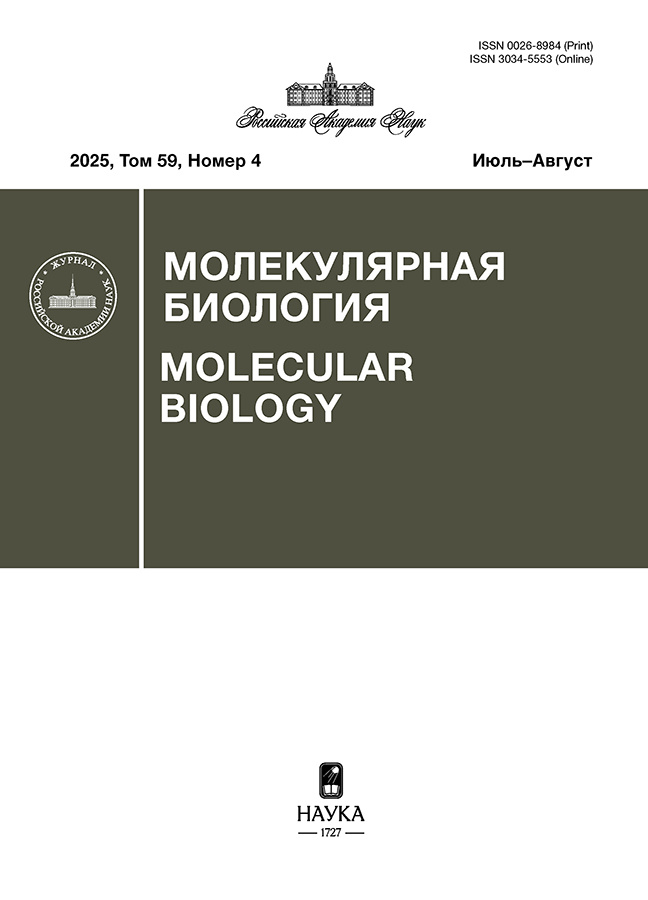Optimization of Production of Recombinant Adeno-Associated Virus Serotype 9
- Authors: Aliev T.I.1,2, Imatdinov I.R.2
-
Affiliations:
- Novosibirsk State University
- State Research Center of Virology and Biotechnology “Vector”, Rospotrebnadzor
- Issue: Vol 59, No 4 (2025)
- Pages: 655-662
- Section: МОЛЕКУЛЯРНАЯ БИОЛОГИЯ КЛЕТКИ
- URL: https://snv63.ru/0026-8984/article/view/692543
- DOI: https://doi.org/10.31857/S0026898425040113
- ID: 692543
Cite item
Abstract
Vectors based on adeno-associated viruses (AAV) have proven to be a convenient tool for genomic editing. However, for transgenesis of laboratory animals or gene therapy for human diseases, a high AAV titer is required. We optimized the conditions for producing AAV serotype 9 (AAV9) to increase the yield of the virus. A common approach is based on transfection of producer cells with three plasmids. We performed transfection with two plasmids encoding all the necessary components for AAV9 production. This allowed us to increase the final titer fourfold. Optimization of the molar ratio of the plasmid containing the gene of interest to the plasmid encoding the proteins of the replicative complex, capsid, and auxiliary factors led to a twofold increase in titer. Optimization of the composition of the cultivation medium for AAV9 production allowed us to significantly increase the yield of the virus. When the DMEM-F12 production medium with a less nutritious DMEM supplemented with fetal bovine serum, the yield of AAV9 increased by approximately 3 orders of magnitude. Thus, optimization of the number and ratio of plasmids, as well as the composition of the cell culture medium, made it possible to significantly increase the production of AAV9 and achieve a final titer of 2.5 × 1012 vector genomes in 1 mL of the production medium of the adhesive HEK293T cell line.
Keywords
About the authors
T. I. Aliev
Novosibirsk State University; State Research Center of Virology and Biotechnology “Vector”, Rospotrebnadzor
Email: aliev.timur99@yandex.ru
Novosibirsk, 630090 Russia; Koltsovo, Novosibirsk region, 630559 Russia
I. R. Imatdinov
State Research Center of Virology and Biotechnology “Vector”, Rospotrebnadzor
Email: imatdinov_ir@vector.nsc.ru
Koltsovo, Novosibirsk region, 630559 Russia
References
- Issa S.S., Shaimardanova A.A., Solovyeva V.V., Rizvanov A.A. (2023) Various AAV serotypes and their applications in gene therapy: an overview. Cells. 12, 785.
- Wang D., Tai P.W.L., Gao G. (2019) Adeno-associated virus vector as a platform for gene therapy delivery. Nat. Rev. Drug Discov. 18, 358–378.
- McCarty D.M. (2008) Self-complementary AAV vectors; advances and applications. Mol. Ther. 16, 1648–1656.
- Lunev E., Karan A., Egorova T., Bardina M. (2022) Adeno-associated viruses for modeling neurological diseases in animals: achievements and prospects. Biomedicines. 10, 1140.
- Li C., Samulski R.J. (2020) Engineering adeno-associated virus vectors for gene therapy. Nat. Rev. Genet. 21, 255–272.
- Brommel C.M., Cooney A.L., Sinn P.L. (2020) Adeno-associated virus-based gene therapy for lifelong correction of genetic disease. Hum. Gene Ther. 31, 985–995.
- Pupo A., Fernández A., Low S.H., François A., Suárez-Amarán L., Samulski R.J. (2022) AAV vectors: the Rubik’s cube of human gene therapy. Mol. Ther. 30, 3515–3541.
- Wang J.H., Gessler D., Zhan W., Gallagher L., Gao G. (2024) Adeno-associated virus as a delivery vector for gene therapy of human diseases. Signal. Transduct. Target Ther. 9, 78.
- Ayuso E, Mingozzi F, Bosch F. (2010) Production, purification and characterization of adeno-associated vectors. Curr. Gene Ther. 10, 423–436.
- Guan J.S., Chen K., Si Y., Kim T., Zhou Z., Kim S., Zhou L., Liu X.M. (2022) Process improvement of adeno-associated virus (AAV) production. Front. Chem. Eng. 4, 830421.
- Kimura T., Ferran B., Tsukahara Y., Shang Q., Desai S., Fedoce A., Pimentel D.R., Luptak I., Adachi T., Ido Y., Matsui R., Bachschmid M.M. (2019) Production of adeno-associated virus vectors for in vitro and in vivo applications. Sci. Rep. 9, 13601.
- Воробьев П.О., Кочетков Д.В., Василенко К.В., Липатова А.В. (2022) Сравнительный анализ эффективности общедоступных методов трансфекции модельных клеточных линий для задач биотехнологии. Вестник РГМУ. 3, 11–19. https://doi.org/10.24075/vrgmu.2022.031
- Zhao H., Lee K.J., Daris M., Lin Y., Wolfe T., Sheng J., Plewa C., Wang S., Meisen W.H. (2020) Creation of a high-yield AAV vector production platform in suspension cells using a design-of-experiment approach. Mol. Ther. Methods Clin. Dev. 18, 312–320.
- Aurnhammer C., Haase M., Muether N., Hausl M., Rauschhuber C., Huber I., Nitschko H., Busch U., Sing A., Ehrhardt A., Baiker A. (2012) Universal real-time PCR for the detection and quantification of adeno-associated virus serotype 2-derived inverted terminal repeat sequences. Hum. Gene Ther. Methods. 23, 18–28.
- Bennett A., Mietzsch M., Agbandje-McKenna M. (2017) Understanding capsid assembly and genome packaging for adeno-associated viruses. Future Virol. 12, 283–297.
- Guan J.S., Chen K., Si Y., Kim T., Zhou Z., Kim S., Zhou L., Liu X.M. (2022) Process improvement of adeno-associated virus (AAV) production. Front. Chem. Eng. 4, 830421.
- Ohba K., Mizukami H. (2023) Protocol for producing an adeno-associated virus vector by controlling capsid expression timing. STAR Protoc. 4, 102542.
- Yang J., Zhou W., Zhang Y., Zidon T., Ritchie T., Engelhardt J.F. (1999) Concatamerization of adeno- associated virus circular genomes occurs through intermolecular recombination. J. Virol. 73, 9468–9477.
- Grieger J.C., Soltys S.M., Samulski R.J. (2016) Production of recombinant adeno-associated virus vectors using suspension HEK293 cells and continuous harvest of vector from the culture media for GMP FIX and FLT1 clinical vector. Mol. Ther. 24, 287–297.
- Chaudhry M.A., Vitalis T.Z., Bowen B.D., Piret J.M. (2008) Basal medium composition and serum or serum replacement concentration influences on the maintenance of murine embryonic stem cells. Cytotechnology. 58, 173–179.
Supplementary files










